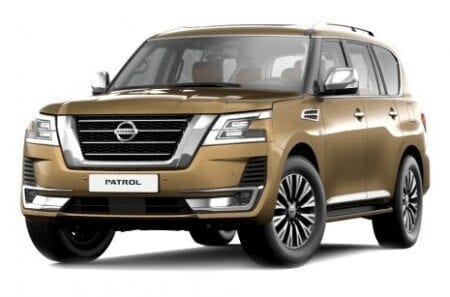
Как избежать ошибок Холдена: как успех Toyota на самом деле помогает GWM, Isuzu, Kia, MG и другим процветать в Австралии, и почему бренду следует беспокоиться | Мнение

Toyotas like the RAV4, Yaris and HiLux have experienced substantial price rises lately, driving many buyers to other brands.
What do GWM (for Great Wall Motors that also includes Haval), Isuzu, Kia and MG have in common?
All have enjoyed double- and even triple-digit percentage growth in Australian sales over the past year, and all partly because of the gaping big hole left in the market due to Toyota’s inexorable march upmarket as a result of seemingly constant price rises.
Yes, other brands like Alpine, Aston Martin, Bentley, Genesis, Jeep, LDV, McLaren, Peugeot, Skoda and SsangYong also recorded hefty percentage gains compared to 2020.
However, their actual numbers still remain comparatively small, while GWM, Isuzu, Kia and MG all saw sales increase by five-figure sums.
MG has gone from 15,253 to 39,025 registrations in the space of 12 months, representing a rise of 156 per cent. Isuzu’s leap from 22,111 to 35,735 sales over the same period is a 61.6 per cent lift and Kia’s numbers soared from an already-healthy 56,076 to 67,964 for a 21.2 per cent improvement. But the star is GWM, rocketing from just 5235 units in 2020 to 18,384, for a spectacular 251.2 per cent win.
The result means these brands are the new major players in town for 2022, as well as the ones that other big mainstream players like Ford, Honda, Hyundai, Mazda, Mitsubishi, Nissan and Volkswagen need to watch very closely.
So, how exactly has Toyota helped GWM, Isuzu, Kia and MG find favour among Australian new-car buyers?
The answer is complicated, as massive global demand combined with production delays due to pandemic-related supplier issues have meant that waiting lists have blown out for many models, to months on end (if not years in some cases, such as certain RAV4s and the LandCruiser 300 Series).
However, in essence, it’s down to our long-time number-one carmaker seemingly pricing itself out of reach from more Australians than ever before in the company’s 63-year presence in this country – at least, it has in the eyes of many consumers, especially since the start of this decade.
In reality, we’ve already outlined that Toyota cars are generally more affordable today once inflation has been factored in than in any time in the brand’s history in Australia. But, when it comes to dollars and cents, rivals like GWM, Isuzu, Kia and MG are really reaping the rewards by offering corresponding models with substantially lower starting prices and higher equipment levels. And buyers are voting with their feet.
Let’s look at the example of the Toyota Yaris.
In 2019, the base Ascent’s list price started from $15,390 before on-road costs; today, that car’s (dramatically superior in almost every way) successor is now the Ascent Sport from $23,740. In contrast, the MG3 Core retailed from $16,990 drive-away for most of last year. Little wonder the latter outsold the former segment sales leader 13,774 to 4495 units.
Much the same applies to Toyota’s RAV4 – 2021’s best-selling non-truck model in Australia. In 2019, the GX opener commenced from $30,640, yet today it’s up to $34,300. if you are willing and patient enough to wait for one. Meanwhile, the new-for-2021 Haval H6 enters the fray from $31,990-drive-away. The result? The H6 saw a remarkable 280 per cent sales spike last year, while RAV4 registrations slipped by 7.2 per cent.
A third example is the HiLux pick-up, the perennial segment mover and shaker that has faced fierce competition in recent times from all corners, and not just from its traditional foe, the Ford Ranger. The Rogue flagship cost $64,490 before on-road costs in 2019 but $70,750 today, against the hot Isuzu D-Max X-Terrain’s $65,900 price tag. Result? The latter’s sales were up 74 per cent in 2021, compared to the Toyota’s modest 22 per cent.
These are just three examples demonstrating why some Australians are straying from Toyota to more affordable brands in recent times, having had their loyalty vexed by double-digit price rises in some cases, and during extremely difficult circumstances to boot.
This may not present as too much of a problem for Toyota in the present moment – its 2021 market share of 22.3 per cent more than doubles that of second-placed Mazda’s 9.6 per cent – but it is down a full per cent over the year before, and that should be cause for concern if it continues as a long-term trend.
Additionally, Toyota passing on big price hikes to consumers in times of widespread hardship may seem cold, especially as it remains one of the world’s richest companies. In fact, in 2021, Toyota was valued at nearly $60 billion USD ($84 billion AUD), putting it in first place as the wealthiest carmaker on Earth, ahead of Mercedes-Benz and Tesla.
Factor in Holden’s demise in 2020 – the one-time symbol of Australian pride and a cultural identity that many people continue to grieve over after its unceremonious execution by General Motors – and it’s clear that brands like GWM, Isuzu, Kia and MG are in the hot seat to start new long-term relationships with local consumers looking for an even break.
If history has taught us anything, it’s that empires should not rest on their laurels. Holden commanded 50 per cent of all new-car sales in the late 1950s and its domination seemed unassailable as late as the ’80s (and again, briefly, in the ’90s and early ’00s). However, like consumers everywhere, Australian buyers walk if they feel they can get a better deal somewhere else.
It’s already happening, and with their momentum rapidly gaining pace, brands like GWM, Isuzu, Kia, MG and others have Toyota to thank.

